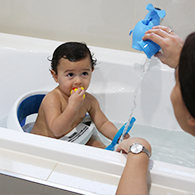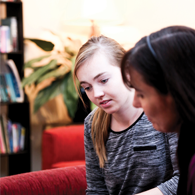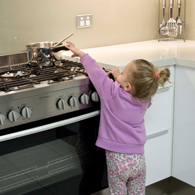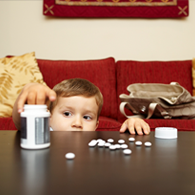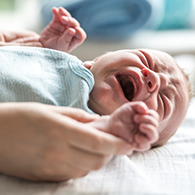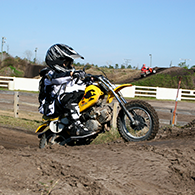Stoves, ovens and microwave ovens
What are stoves, ovens and microwave ovens?
Stoves, ovens and microwaves are appliances in our homes that produce heat to cook food. Stoves and ovens produce heat using gas or electricity to enable cooking.
Microwave ovens use intense microwave energy, which is absorbed by water molecules in the food, causing them to vibrate. Food is cooked as a result of the friction.1

How are children injured?
Burns
Children can get burnt in the kitchen when cooking is happening if:
- they pull saucepans or kettles down onto themselves
- they spill the hot food or drink over themselves.
- they touch stove hot plates or hot oven doors
- an upright stove tips over, spilling hot food or liquid onto them. Some upright stoves are unstable when the oven door is open if they are not fixed to the wall. They may tip over if a child stands on the open door.
Microwave ovens heat food to a very high temperature. Children can be burnt by microwaved food or drink if:
- they pull food or liquid out of the microwave and spill it over themselves.
- they have contact with escaping steam from microwaved food or liquid.
- food is heated unevenly, causing burns when young children eat the food or drink.
How common are these injuries?
Between January 2014 and December 2018, 255 children were treated in NSW hospitals for a burn sustained while cooking was taking place.
Children aged 0-4 years accounted for 35% of cooking related burns in this time period.2 In this age group, the majority of burns occurred when children pulled pots, pans or other containers of hot liquid or oil onto themselves or had hot liquids or oil spill on them.
Children aged 15-16 years accounted for 17% of these burns in NSW and 23% of these were injured in a cooking related incident in a workplace.
What are the laws, regulations or standards?
In NSW, all electrical appliances and equipment sold must meet the requirements of the Gas and Electricity (Consumer Safety) Act 2017 (NSW) and the Gas and Electricity Regulation 2018. This legislation covers the distribution of safe electrical appliances and other electrical goods which must be tested and approved before they can be sold. Microwave ovens, stoves and ovens are included in this.
The easiest way to check if an electrical product is approved is to see if it displays an acceptable approval mark, as shown on the NSW Fair Trading website.
Remember:
- Stay in the kitchen when cooking and supervise children at all times.
Stoves and ovens
- Use a barrier, such as a safety gate, to keep young children out of the kitchen when cooking.
- Use the back stovetop elements first so young children can’t reach them.
- Always turn saucepan handles to the back of the stove so they are out of reach of young children.
- Use a barrier such as a stove guard to stop children reaching pans and hotplates.
- Install an oven door guard to stop children from touching hot oven doors.
- Make sure that upright stoves are stable and fixed properly to the wall.
- Do not allow children to stand on open oven doors.
Microwaves
- Open lids or covers so the steam rises away from you.
- Stir food thoroughly after it has been heated in the microwave to ensure heat is evenly distributed.
- Some liquids or foods can be heated beyond their natural boiling point, causing them to unexpectedly boil over or even explode if jolted or stirred after removal from the oven. To avoid this, cover food or liquid and allow it to cool before removing from the microwave.
- Don't heat water in the microwave for too long.
- Don’t put your face or body over the container and keep the container at a safe distance when you add things to it for the first time such as a teabag.
- Don’t use plastic containers or films in a microwave oven unless they are specifically designed for such use.
- Test the temperature of the food that has been heated in a microwave to make sure it is safe to serve.
- Do not heat baby bottles in the microwave.
First aid for burns
- Use cool running water on a burn for 20 minutes.
- This will stop the burning process and cool the burn. Cool running water can be useful within three hours of a burn.
- Call 000 or seek medical help if you are unsure.
- Never use ice, iced water, cream, toothpaste or butter on a burn as they can make the burn worse.
- Burn creams do not cool the burn and must not be used instead of cool running water.
References
1 Australian Radiation Protection and Nuclear Safety Agency (2015) Microwave Ovens and Health factsheet. Available from:
2 NSW Statewide Burn Injury Service. Unpublished data. August 2019
